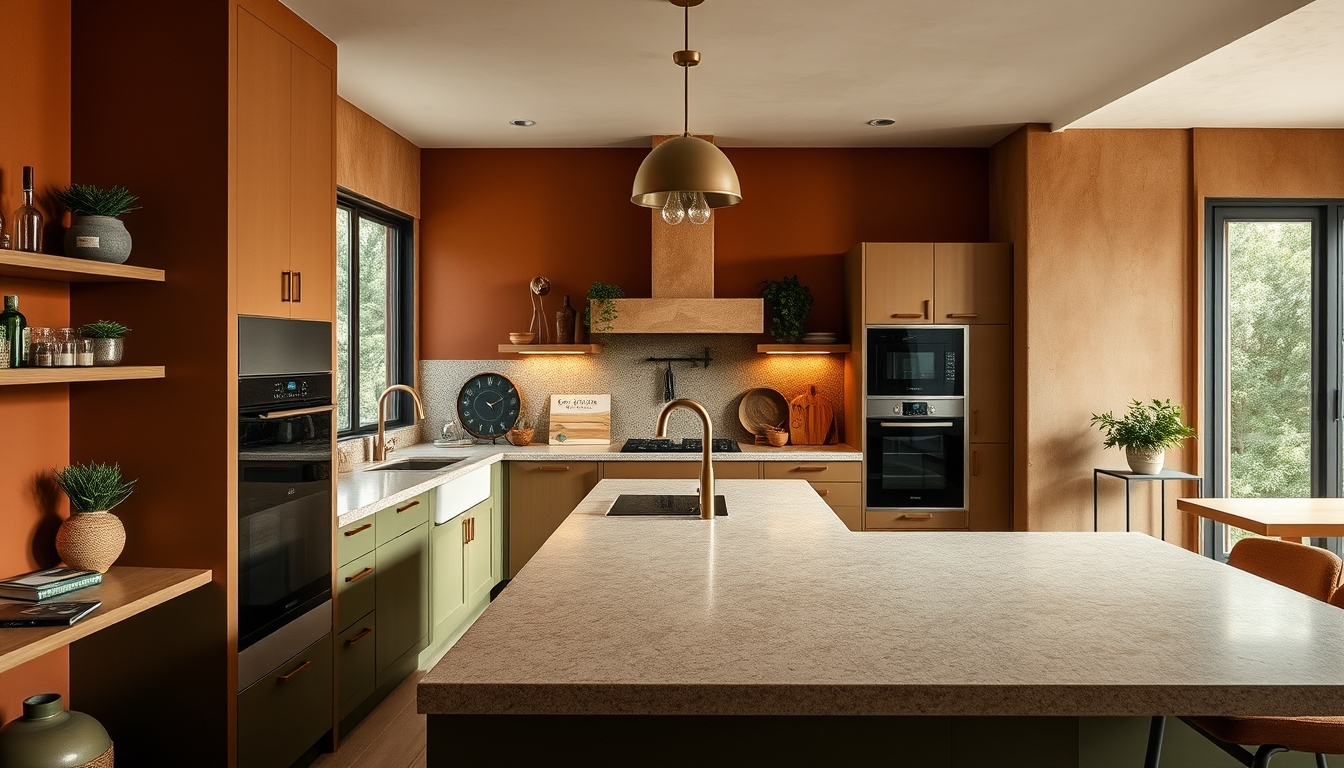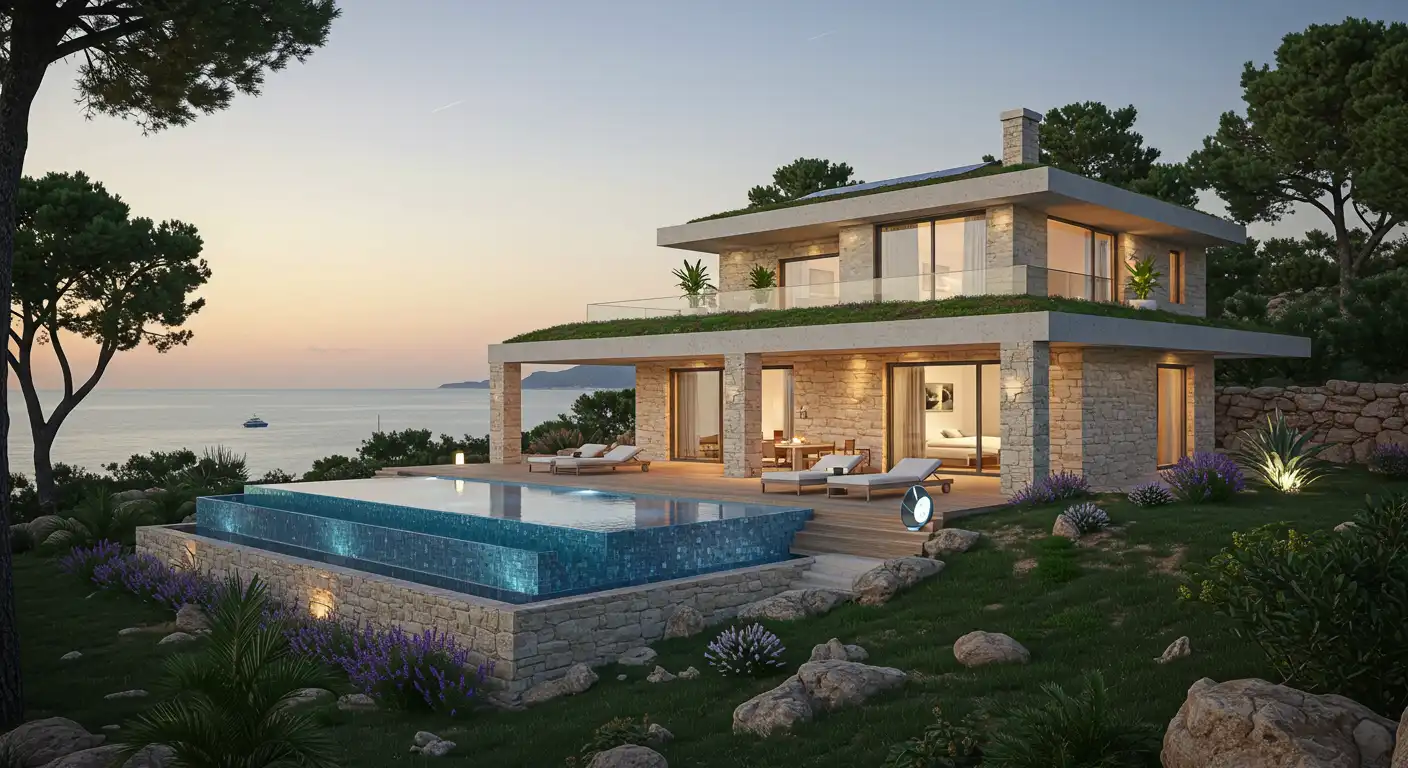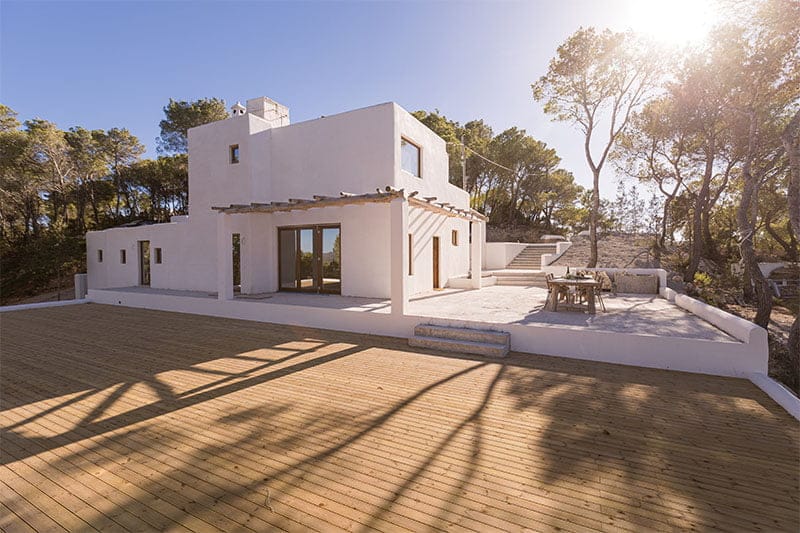The Best Facade Rehabilitation Techniques for 2025 and Beyond
In Spain, a concerning 68% of buildings constructed before 1980 urgently need inspection—almost like a crucial medical check-up. Some say it’s the European Green Deal, along with the support of the Next Generation EU funds, that is pushing the sector toward a stunning technological transformation: from energy-generating facades to climbing robots applying mortar with surgical precision. This sector is growing at an annual rate of 15% and aims to reduce emissions by 40% by 2030, with innovations like self-healing systems and futuristic nanometric diagnostics paving the way.
A True Revolution in Facade Rehabilitation
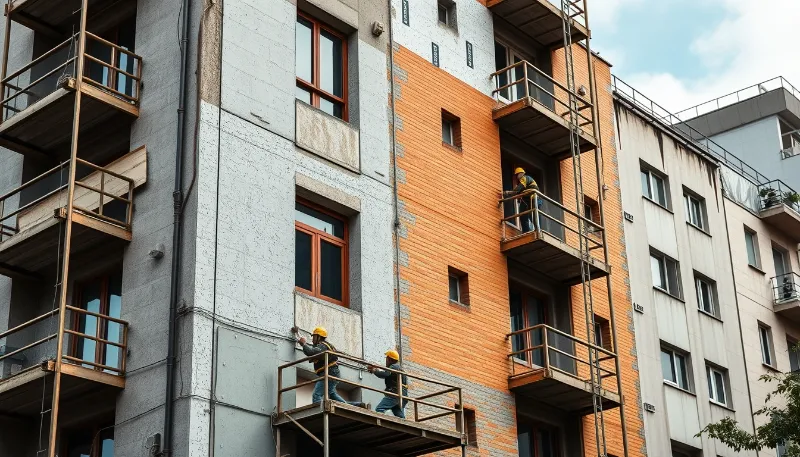
The world of facade rehabilitation is immersed in an unprecedented transformation, driven by ever-demanding regulations and technological advancements. A 15% annual growth is forecast through 2025, with intense focus on meeting the daunting European Green Deal target: cutting building emissions by 40% before 2030. This revolution is shaking up everything from materials to processes, redefining what we mean by efficiency.
The Rehabilitation Market: A Battlefield
We are in a market marked by a striking duality: the almost desperate need to update an aging building stock creaking at the seams, and the golden opportunities offered by the Next Generation EU funds. That dizzying 68% of Spanish buildings over four decades old are crying out for intervention, according to the Institute for Energy Diversification and Saving. This is where innovative solutions flourish—those that promise the coveted combo of technical performance and environmental sustainability.
What’s Revolutionizing Facade Rehabilitation?
A perfect storm of three powerful forces: strict European regulations, rapid advancements in smart materials, and intense social pressure for healthy spaces, all pushing in the same direction. The EPBD 2023 directive, for example, requires that the entire property market display updated energy certificates as if they were VIP passes. And more technologies keep piling in, such as ultra-modern IoT sensors monitoring every detail in real time.
| Indicators | Before | Now | Benefit |
|---|---|---|---|
| CO₂ Emissions | High | Reduced | 40% decrease |
| Energy Efficiency | Low | Optimal | 55% improvement |
| Embedded Technology | Limited | IoT Sensors | Real-time monitoring |
A Transformative and Ongoing Perspective
Energy efficiency, that elusive goal, is no longer optional—it’s mandatory. The External Thermal Insulation Composite System (ETICS or SATE) has reinvented itself in 4.0 versions that don’t just promise but actually self-heal. In Madrid’s Chamberí district, pilot projects have achieved a 55% reduction in energy demand, thanks to nanolayers and other advances that not only meet but far exceed the requirements of the controversial CTE 2022.
Cladding Systems: Technology in Action
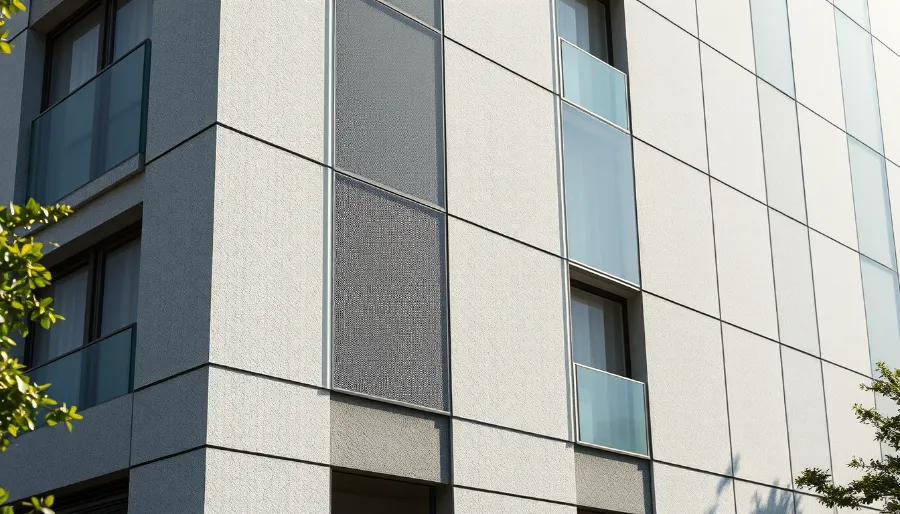
The third generation of facade cladding is nothing short of revolutionary. Imagine an architectural skin that reacts to and responds to the environment in real time. This isn’t science fiction—it’s already installed in the Telefónica District C building, where electrochromic claddings adjust opacity in a perfect dance with light and shadow to optimize thermal comfort.
Nanolayers: The Evolution of Illusion
The latest generation of nanolayers act as artificial skin for our buildings. Among recent developments, we find:
- Membranes that store and release heat almost intelligently using phase-change particles.
- Coatings that decompose air grime using the common titanium dioxide.
- Custom thermoconductive films, hybridized with metal and organic components.
In the lab, these solutions seem to defy the laws of thermal transmission, with impressive reductions down to 0.35 W/m²K.
The Magic Behind Smart Coatings
These systems work based on complex yet effective engineering:
- A base layer of reinforced polyester providing structure.
- An intermediate layer filled with exciting self-healing microcapsules.
- An active surface that plays with nanoparticles, responding to temperature or light.
Thanks to this intricate structure, cracks up to 0.3 mm can be sealed automatically—paving the way for sustainability.
Solutions That Almost Protect Themselves
Self-healing ETICS systems are dream-like, with micro-spheres that activate to provide comic book–style structural integrity. A prime example was their use at the Spanish Pavilion at Expo Dubai 2025, where the system maintained integrity even under extreme thermal changes.
Facades That Generate Their Own Energy
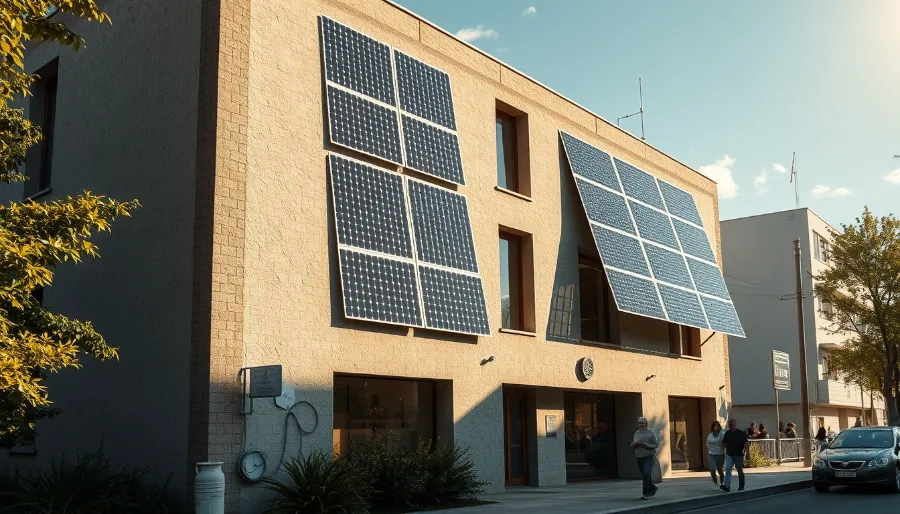
What was once experimental is now tangible reality: photovoltaic integration in facades is here to stay. Thanks to BIPV (Building Integrated Photovoltaics) tiles, which exceed 22% efficiency, our buildings can generate power without compromising design.
Next-Gen Solar Panels
The blend of organic solar cells, photovoltaic glass, and solar systems that also provide domestic hot water is a glimpse into the future. In Bilbao, the NeMo project has already integrated these marvels into 1,200 m² of facade, yielding significant energy savings.
Benefits of Solar Facades
- Not just energy: they also fight the urban heat island effect.
- Provide a barrier against harmful UV radiation.
- All without compromising the beloved aesthetic value.
Lifecycle analysis shows surprisingly fast returns: just 7 to 9 years.
Projects That Surprise
One example is the SÍVICO building in Valencia, which goes even further:
4. Ventilated facade with innovative solar cells.
5. Vertical gardens that not only beautify but bring life.
6. Advanced systems for evolving thermal storage.
The result is an energy balance miracle that starts yielding benefits in year one.
Diagnostics and Advanced Technology
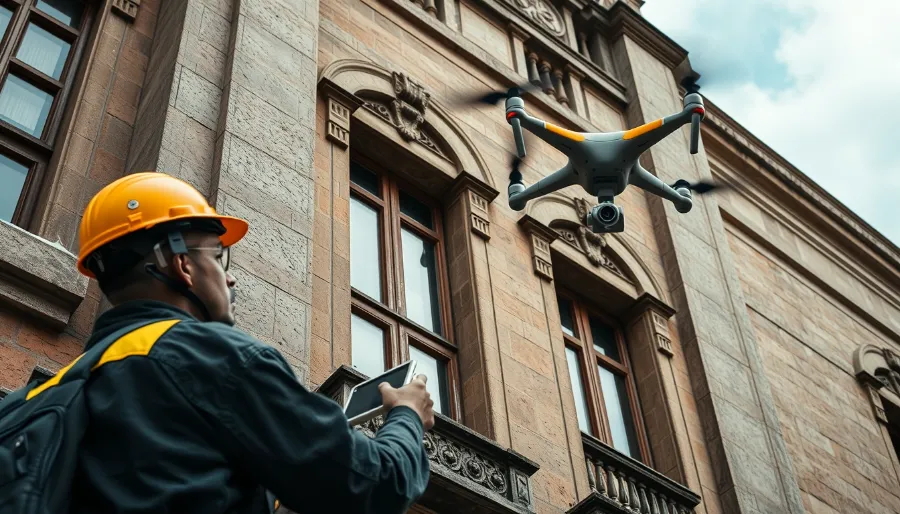
Today, inspections are undergoing their own revolution, like the leap from carts to electric cars. Quantum thermography, detecting invisible energy losses like X-rays, is just one example.
Tools More Modern Than Ever
Drones are now equipped with:
- 360° LiDAR scanners.
- Spectrometers that would thrill any scientist.
- Multi-spectral cameras that miss nothing.
At Palma Cathedral, these tools mapped 12,000 m² of facade in just 48 hours. Almost unbelievable!
Impact of These Technologies
- Diagnostic times cut by a stunning 70%.
- Detect structural issues before disaster strikes.
- Create accurate BIM models that enhance energy simulations.
Thanks to these advances, interventions are less invasive and more respectful of original materials.
Augmented Reality as a Key Player in Rehabilitation
With HoloLens 3 headsets, it’s now possible to overlay:
- Historical reconstructions.
- Thermal simulations that practically predict the future.
- Technical annotations like the ultimate instruction manual.
A clear example is the restoration of Poblet Monastery, where this innovation helped preserve historic beauty and boost efficiency.
Tangible Innovation in Execution
Robotization has reached unexpected heights. New robots developed by Tecnalia can now operate vertically carrying loads of up to 200 kg.
No More Aches: Robots for High-Altitude Work
The latest models include:
- Sophisticated sensors reporting real-time pressure.
- Laser systems for pinpoint accuracy.
- Interchangeable heads for multifunctional use.
At the Tower of Hercules, these robots cut intervention time by an impressive 85%.
What Advantages Do Robots Bring?
- Increased safety in hard-to-reach areas, plus 24/7 operation.
- Material application so precise it defies natural laws.
- A complete digital record for future reference.
These advances are practically a dream for large-scale rehabilitation projects.
Cutting-Edge Application Techniques
Self-leveling mortars with carbon nanotubes are the next evolutionary step. At the Reina Sofia Museum, their durability and self-healing capacity made them the top choice.
A Sustainable Future: Materials for a New Era
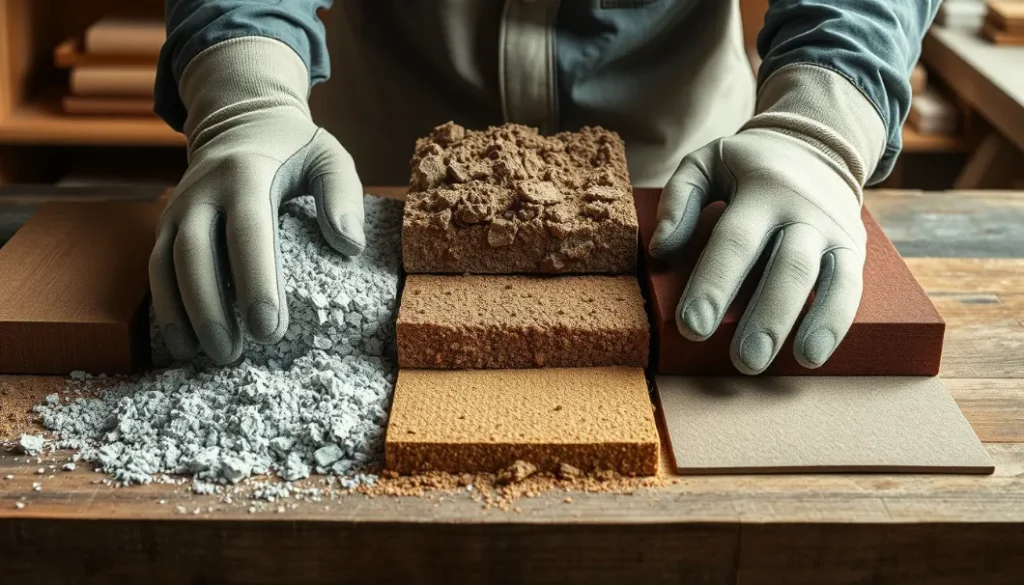
Innovations like cellulose aerogel, not only superior but carbon-negative, are setting the new standard.
Insulation: From Nature to Building
Some developments seem like sci-fi:
- Mycelium panels that are both effective and sustainable.
- Treated sheep’s wool that improves fire resistance in a naturally elegant way.
In Zaragoza, their use in social housing reduced energy consumption by a remarkable 60%.
Benefits of Biogenic Materials
- Naturally regulate humidity—ideal for challenging climates.
- Naturally pest-resistant, no chemicals needed.
- Don’t emit VOCs that often trigger allergies.
From cradle to grave, these materials generate about 70% less CO₂ than conventional alternatives.
Circular Economy in Rehabilitation
The ambitious ReFACADE project in Barcelona not only recycles most waste but has lit the way for the industry, showing how reuse can be the key.
Highlights include:
- 85% effectiveness in waste recycling.
- Innovative reuse of complete facades using unmatched techniques.
- On-site mortar production using recycled aggregates.
This brought substantial economic and environmental savings to the 22@ district.
Effective Environmental Protection
From catalyzing air decontamination to noise reduction, ceramics with TiO₂ nanoparticles are a total game changer.
What Do Multifunctional Ceramics Offer?
- Coatings that function even under low light.
- Decontaminating pavements that reduce smog via chemical magic.
- Air-purifying facades—the pinnacle of new architecture.
These systems seem magical, neutralizing up to 450 kg of CO₂ per 100 m² annually.
Major Improvements in Air Quality
The process is like a natural dance:
7. A clever adsorption system traps pollutants.
8. An irresistible catalytic effect breaks them down.
9. Simple but effective rain rinsing.
The result is healthier microenvironments for all of us.
Financing and Incentives: The Backbone of Transformation
The Rehabilita2025 plan allocates a notable €4.2 billion through:
- Bonuses cutting up to 65% off property tax (IBI).
- Publicly backed loans offering breathing room.
- Tax deductions tied to every energy upgrade.
These are especially aimed at vulnerable buildings, focusing on full-scale interventions for greater impact.
Financial Models from Another World
The ESCO Plus model allows for nearly self-sustaining rehabilitations:
10. Binding audits leaving no loose ends.
11. Contracts sharing long-term energy savings.
12. Performance guarantees providing investor peace of mind.
One success story is in Málaga, where 500 homes were rehabilitated with zero upfront cost to residents.
The Technological Frontier in Facades
Programmable materials—almost like magic bricks—are becoming a reality. Shape-memory alloys that open and close like a natural rhythm are redefining ventilation and efficiency.
Bio-Adaptation: The Next Step for Our Cities
In the BioSkin project, facades appear alive, integrating:
- Bioreactors enabling microalgae to capture CO₂.
- Growth-regulating structures for a friendlier environment.
- Nature-inspired sensors monitoring entire structures.
Just look at the MEDUSAS building in Almería, where artificial corals clean the air and regulate temperature.
What Are Bio-Adaptive Facades?
They’re fluid systems enabling buildings to:
13. Interact dynamically with environmental conditions.
14. Use life itself as an architectural element.
15. Self-repair without human intervention through biological processes.
One might say the future is now—built on tiny biological steps toward sustainability.

